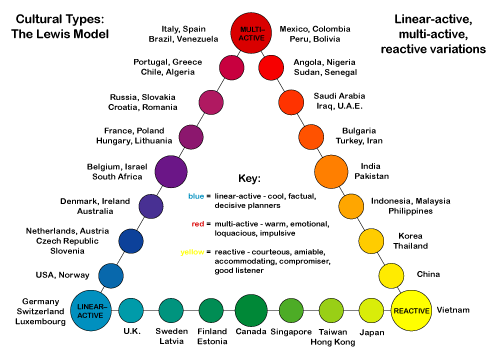In Australia, and other industrialised countries with strong shared cultural traits, there’s a consensus that these cultures have world’s best practice on how to ‘manage’ time. So why has time anxiety increased exponentially and why is feeding the time efficiency beast an industry in itself? It needn’t be this way.
In a post-industrial world, people would agree that without precise and regular scheduling, things will get messed up, systems will collapse and people will die. There’s no doubt about this. National Geographic’s ‘AfterMath – Population Zero’, in a hypothetical future sans humans, shows how this would play out. Buildings collapse. Dam walls burst. Concrete jungles become jungle jungles.
‘National Geographic-meets-disaster movie’ scenarios like these that we all love with a gloomy, ‘We’ll all be rooned’ satisfaction still remind us how the very systems and processes that tyrannise us are utterly dependent on us.
Back in the good old present, it’s disturbing to see how the timetabling of time affects our lives. We itemise, slice and dice our social and work lives and we torment ourselves over achieving work-life balance.
I think that our frantic scrabble to be more time efficient with less time to do it in, together with our equally frantic scrabble for serenity, wholeness and relaxation, points to a malaise that’s rooted in deep, globally powerful, cultural concepts about the very nature of time.
At a recent address I delivered at the Law Institute of Victoria on cultural challenges in legal practice, I explored how lawyers experience deep tension between time constraints, billable hours and the time they need to take with culturally diverse clientele and colleagues, to understand context, set out expectations and work through issues. Clients often feel ‘shoehorned’ into time frames they find too rigid and lawyers often don’t have the skills to accommodate the differences, with negative effects on lawyer-client relations, legal outcomes and legal practice itself. My aim was to plant a seed in participants’ minds, with practical suggestions to implement as part of broader organisational strategy to achieve more satisfactory relationships and legal outcomes.
But time efficiency culture is deep-rooted. In nicely ironical synchronicity, the presentation before mine featured how to manage time more efficiently. The presenter provided strategies, tips and tools like easy-to-remember acronyms and time management apps. I couldn’t help feeling that instead of addressing the underlying reason for time stress, this shifted the problem, rather like squeezing a balloon. The air pressure just shifts to the other side and eventually the balloon bursts.
Lawyers are deeply stoical, but the legal profession also has high rates of alcoholism, drug abuse and anxiety disorders. How do these people diligently notetaking, I wondered, manage the added pressure of aggressive time management? When does the pressure become too much?
Feeding the time efficiency beast
In Australia, the UK, the United States and other industrialised countries with strong shared cultural traits, there is a shared, if unspoken, consensus that these cultures have nailed world’s best practice on how to approach and ‘manage’ time. On the other hand, people in these very cultures spend millions of dollars on time management publications, workshops, electronic calendars and now time management apps in a grim quest to extract the greatest volume of boxes ticked out of the 24 hour cycle.
Why are all these necessary if this approach to time is so good?
And if all these time efficiency tools work so well, why has the time anxiety increased exponentially and why has feeding the time efficiency beast become an industry in itself, first cousin to the diet industry? The high volume of time management strategy dropout feeds the industry. The industry thrives on failure.
I believe this is why our whole time efficiency drive in post-industrial cultures like Australia risks being a spiraling exercise in futility.
But it doesn’t need to be. I believe that the very complexity and cultural diversity of modern society offers ways out of this unsatisfied obsession with time efficiency. I’ll return to this below.
Recent research from Columbia University on task completion against deadlines has found that busier people are more likely to eventually complete tasks after missing the deadline. This happened, the researchers found, because ‘busy people tend to perceive that overall they’re using their time effectively, which mitigates the sense of failure people have when they miss a task deadline.’
You might say: ‘Aha!! This just proves that people should cram more activity into their day, so they’ll feel that they’re being time efficient. And even if they go over their deadline, they’ll get it done!’ It also reinforces the popular greeting: ‘How are you going? Keeping busy?’, as though volume of activity per se were a moral virtue.
But surely busy-ness isn’t about ramping up the volume of activity? Isn’t it fundamentally about purpose and meaning? Indeed, the authors suggest thatfeeling busy (my italics), not just being busy, can mitigate against the dispiriting, productivity-sapping effects of missing deadlines.
It’s significant too that missing deadlines is highly commonplace. No wonder people turn to extreme measures to wrestle the time management beast into submission. And then often give up under its crushing tyranny, or under theirgrowing obsession with time-managing every aspect of their lives.
It would be interesting to repeat the study in a different cultural setting outside the post-industrialised Anglo-sphere. The UAE, let’s say, or Chile. I’d also tweak the theory and propose instead that ‘purposeful people are more likely to feel that they are fulfilling their larger work and life goals’.
My time is your time, stupid
Around the world, people instinctively assume that everyone else has the same concept of time, rather like any given aspect of culture. Where you have powerful industrialised economies across culturally diverse nations like Indonesia, Japan, Brazil, Canada, Australia and France, it’s reasonable to assume that people who live and work in these settings perceive time – and see time effectiveness – in the same way. Common to them all are interconnected professions, industries and sectors that rely on schedules and targets and other linear-time approaches or they simply wouldn’t work.
But scratch just beneath that controlled surface and you’ll find differing approaches to time taking place side by side, almost like parallel universes. These countries have populations with differing underlying concepts of time and differing approaches to how you should employ time and how to be effective with it.
Time also has a tremendous moral weight. We feel deep personal offence if we feel that others have wasted our time, failed to adhere to schedules or failed to allow sufficient time for dialogue and relationship building. Time is vital for framing and driving business relationships. Misunderstandings over time cause constant friction across the professional world, where people with different values and behaviours about time don’t establish expectations with each other and end up with bitter resentment, nail-biting frustration and endless irritation.
For example:
- In a property dispute, your client’s neighbour constantly changes their story, turns up to meetings late, refuses to put anything in writing and keeps ‘bending the rules’. Your angry client is sliding down a slippery slope of ‘This is all dishonest and underhand + my adversary is from this cultural background = everyone from this cultural background are untrustworthy and underhand. You may have experienced similar frustrations with time and communication and secretly you agree. This influences your own attitudes and behaviours with clients and colleagues.
- You’ve finally built up a rapport with your new client, but now they’re ringing you ‘24/7’, expecting you to drop everything and deal with their issues. You haven’t set out expectations with your clients about how you approach your use of time. You feel they’re too demanding and they feel that you don’t care about their needs. You could risk losing a good client or potentially more.
These miscommunications and clashes can have deep financial consequences, torpedo promising partnerships, pit colleague against colleague and sour business relations.

‘I’m learning to give time to time – because everything comes when it has to come…not a day before, not a day after.’
This does not mean that time is considered less important in some cultures than in others. It’s not. For instance, a popular expression in Latin America is ‘darle tiempo al tiempo’ – literally, ‘Give time to time’. Since time is deeply important, it shouldn’t be stuffed into unnatural, abstract units.
How do YOU see time?
The Yupno people of Papua New Guinea not only build off local topography to describe spatial relationships, but they also use uphill and downhill contrasts to describe time. ‘Uphill’ words relate to the future; ‘downhill’ words refer to the past.
Further illustrating this diversity of views about time, Artist collective MW2MW brought together people’s visualisation of time in their online collaboration ‘The Time Project‘, and the metaphors they use to describe time. Time is seen as:
- an earthworm
- an hourglass with a floppy shadow
- a twisting continuum of musical bars and notes
- universes that pop
- a rollercoaster
- fading footsteps
- a wandering path
- ripples
You may be thinking, ‘How odd and quaint. So not relevant to me and my work-life balance’. Think again. Many cultures around the world, cultures that you may be interacting with for business – your own employees and colleagues – have vastly different ways of perceiving, describing and using time.
Business and cultural expert and linguist Richard Lewis describes three broad three kinds cultural orientations that humans have around time. These are:
Linear-active cultures
These people tend to perceive time and organise activities in an orderly, compartmentalised, linear, one-after-the-other fashion. They prefer fixed hours and highly value punctuality. They make up about 600 million of the world’s population and broadly encompass countries like the UK, Germany and the USA.
Multi-active cultures
These people prefer to address needs as the occasion demands. They see fixed hour schedules as rigid and do not place a high value on strict punctuality. They make up about 3.3 billion of the world’s population and include Latin Americans, Middle East and Iranian people, Southern Europeans and Africans.
Reactive cultures
These people tend to be value silence and non-verbal communication and distrust effusive talk. They are flexible about hours but value punctuality. They make up about 1.7 billion of the world’s population and include Japanese, Chinese, Vietnamese and Singaporeans.
Hybrid reactive-multi active cultures
These people include Indonesia and the Philippines. They make up about 290 million of the world’s population.
Other hybrid cultures are likewise more fluid in their tendencies. Of course, within countries, communities and individuals too, you find variations on these approaches to time.
In my own case, I have a definite linear-active approach to time, partly because of my cultural background as an Anglo Australian and partly as a deliberate choice because this provides me certainty and useful structure in a world that I perceive as complex, nuanced, full of interconnected patterns. Oh the other hand, I have a definite ‘warm and emotional’ multi-active side which picks up on nuances, trends and shifts. This side is tremendously useful to me as a professional interculturalist. I love using my Outlook calendar but detest time management apps and measurement devices like management apps. I also love the visual aesthetics and calming properties of a tidy desk, pared-down professional dress and reconciled, up-to-date bookkeeping.

Global snapshot and starting point to consider the different ways people perceive, value and behave around time
Teaching business English in Japan, my neatly boxed and wrapped meals provided a visual metaphor that fit in well with timetables carved up into precise intervals that corresponded with the precision of trains delivering students to the college premises, the exactitude of the text-based curriculum and 10-minute between-classes time allotted to teachers to mark attendance records and prepare for the next class. Layers of time were embedded in ritual greetings, small ceremonies and adherence to deeply rooted social protocol.
On the other hand, project managing in San Salvador, El Salvador, meetings, sessions and program events ‘bled’ generously around the edges. Attendees would arrive late from previous activities but often stayed well over the allotted time, giving the activity their full attention as long as they felt necessary. ‘Salvadoran time…!’ my colleagues would say, rolling their eyes. They adhered to the linear time expectations imposed by the organisation (founded and led by a Caucasian US-born manager) but often defaulted to multi-active approaches to time usage. The organisation allowed for objective outside factors beyond its control – such as unpredictable traffic – but never addressed competing time orientations and how to accommodate them within the overarching time structures of the organisation. This would frustrate international employees, who were not trained in time orientation differences or coached to adapt to them.
As we’ve seen, where linear-active systems and processes are socially dominant (such as in Australia), this brings undercurrents of tension between people and groups with differing cultural tendencies around time. Subtle shifts have evolved over time within migrant destination nation states. With greater movement and diversity of populations than ever before, this reinforces the need to be sensitive to different concepts of time.
With greater movement and diversity of populations than ever before, subtle shifts have evolved over time within migrant destination nation states. The overlapping and jostling of completely different worldviews pose a deep contemporary challenge, whether on a global stage or in the home environment. As we’ve seen, where linear-active systems and processes are socially dominant (such as in Australia), this brings undercurrents of tension between people and groups whose behaviours are anchored in differing cultural tendencies around time.
If you’re from Australia and you place a high value on punctuality but can make small allowance for slight lateness you might have been dismayed at being locked out of the offices of your new German client because you arrived five minutes over time.
You might have been frustrated by being kept waiting by your Dubai client who places a high value on finishing a conversation and honouring the relationship; and therefore sees nothing wrong in meeting you when they’re ready to. They are likely to extend the same courtesy to you but if you’ve already booked another appointment you might have to cut the meeting short and risk offending them.
At the same time, there are great opportunities to harvest from this diversity of approaches to time.
In illustration of this, the May Harvard Business Review considers the success story of global technology services company Tata Consultancy Services, which at the turn of the century made the seemingly counterintuitive move to wind down its call-centre operations. This decision is described as ‘planned opportunism’:
(R)recognizing that the future is unpredictable, shaped by nonlinear changes and chance events—the “opportunism” part. How you as a leader respond is the “planned” part. Planned opportunism requires sensitivity to weak signals—early evidence of emerging trends from which it is possible to deduce important changes in demography, technology, customer tastes and needs, and economic, environmental, regulatory, and political forces. Attention to weak signals gives rise to fresh perspectives and nonlinear thinking, which help an organization imagine and plan for various plausible futures.’
I believe it’s no coincidence that the article’s author Vijay Govindarajan is ethnically Indian and Tata is an Indian company. This carries with it a recognition that time doesn’t unfold in a predicable linear form and therefore there can be a greater receptivity to more subtle signals and signs (more below on non-linear concepts of time).
Cultural diversity in our leadership and across our workforces, if we can harness it properly, can provide fertile ground for ‘planned opportunism’ to flourish. I especially like this concept as compared with ‘disruption’, which has a rather linear, brutal rigidity to it.
How can you loosen the ‘time efficiency’ vice without compromising your effectiveness?
Within time and other constraints, people and businesses need some time flexibility to learn about their clients’ expectations and broader desired outcomes, not just the specifics relating to narrow outcomes.
Businesses and organisations have already looked at ways to loosen the time efficiency vice. A number of Australia’s top legal firms have shifted away from the billable hours approach, offering arrangements, such as fixed fees and retainers. Clients have been following the change. For example, between 2010 and 2013 the rate of corporate clients spending their legal budget on hourly billing dropped from 77 percent to 59 percent.
Changes like this can also allow for for the extra time needed to accommodate culturally diverse clientele or possible cultural complexities related to work being done.
An underwhelmed Apple watch user recently posted an article about their ‘awful year’ with the Apple watch. Casey Chan wryly commented:
‘I used to joke that wearing a watch is handcuffing yourself to time. Wearing an Apple Watch (or any smartwatch, really), doubles down on that by locking you in a barricade of notifications too. So I’ve taken the Apple Watch off and don’t know when I’ll put it back on.’That pretty much sums up what’s happening in our linear-time dominated world where we’re slicing and dicing our time into ever-more unmanageable, production schedule-like components. In doing so, we’re shackling ourselves to an artificial concept of what time should be all about.’
I wonder when the time pressure is going to give. When the moment comes, it mightn’t be pretty but I hope I’m wrong. Here are some points to consider if you’re on the time efficiency treadmill but not ultimately feeling gladness about where your time management is taking you.
Some things you can do to deal with the time efficiency beast
- Think about the tools and strategies you use to achieve your work and life goals. Are you truly satisfied and feeling more or less at peace with things? If a time management app works for you – fantastic. If it’s too rigid for you or if you find that linear approaches to time bring too many communication clashes and unsatisfactory outcomes, think of ways you can mix and match strategies and tools that suit you and your environment. This might be more flexible programming, allowing ‘cushion time’ or ‘breakout time’ to allow colleague and client discussions to continue.You might combine strict timetabling with flexibility around how you use your workspace or dress for work, or vice versa.
- Allow your client the time and space to tell you what they wish to tell you. Be alert to cues about the time orientation of your client and do some background checking on the internet. To paraphrase Julia Gillard, ‘It won’t mean everything, it won’t mean nothing…but it will mean something’.
- Establish and reinforce with your client your expectations about time and explain your approach. Check and recheck for understanding and agreement.
- If overseas, adjust your program. Plan your travel time in advance in Germany or Switzerland so you’re punctual. Allow lots of ‘cushion time’ with your Middle East or Filipino client. Don’t load up your schedule with appointments and be prepared to fill in time
- If you’re giving a speech or presentation in another country, make appropriate time allowances for Q and A. Some groups will expect an exact allotment of time. Others will expect ‘as long as it takes’ to answer questions, especially if they’re enthused by the subject.
- If being a ‘time warden‘ and cutting off meeting discussions to meet time limits works for you and your clients and colleagues, great. But be mindful that this may fit badly into people’s time orientation and you may miss out on valuable sharing, insights, solutions and relationship building. Understand the difference between this and ‘long-windedness’ and allow that ‘cushion time’ or ‘follow up’ time for people who would benefit from extra time.
- Make use of your culturally diverse workforce and business partners. Also make use of people who keep up to speed with the world around them by deep reading and engagement with current affairs. This receptivity to different nuances and trends will open up opportunities for ‘planned opportunism’.
Have you found ways to get the time efficiency beast off your back?
Have you leveraged the different time perspectives of your workforce, business partners and clients to achieve more satisfactory outcomes and shared goals? We’d love to hear your stories!




